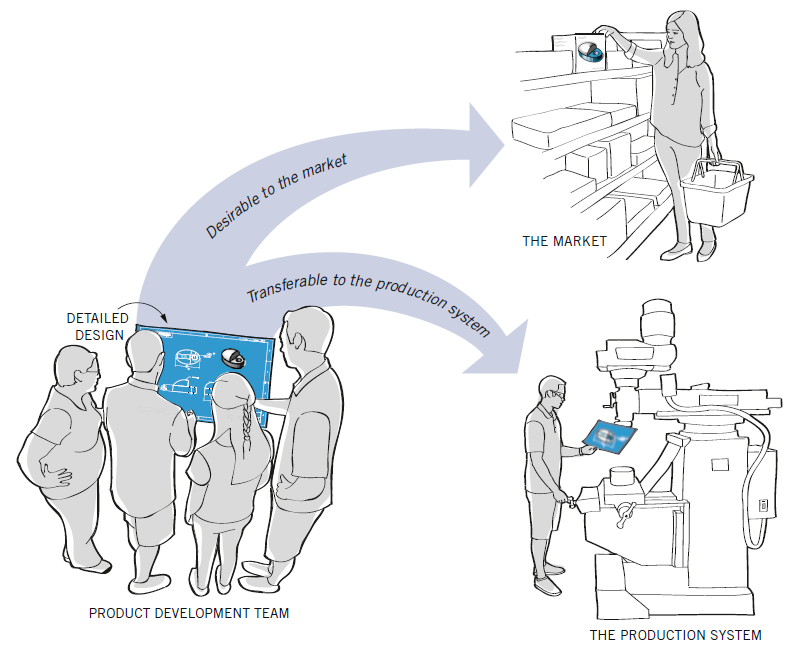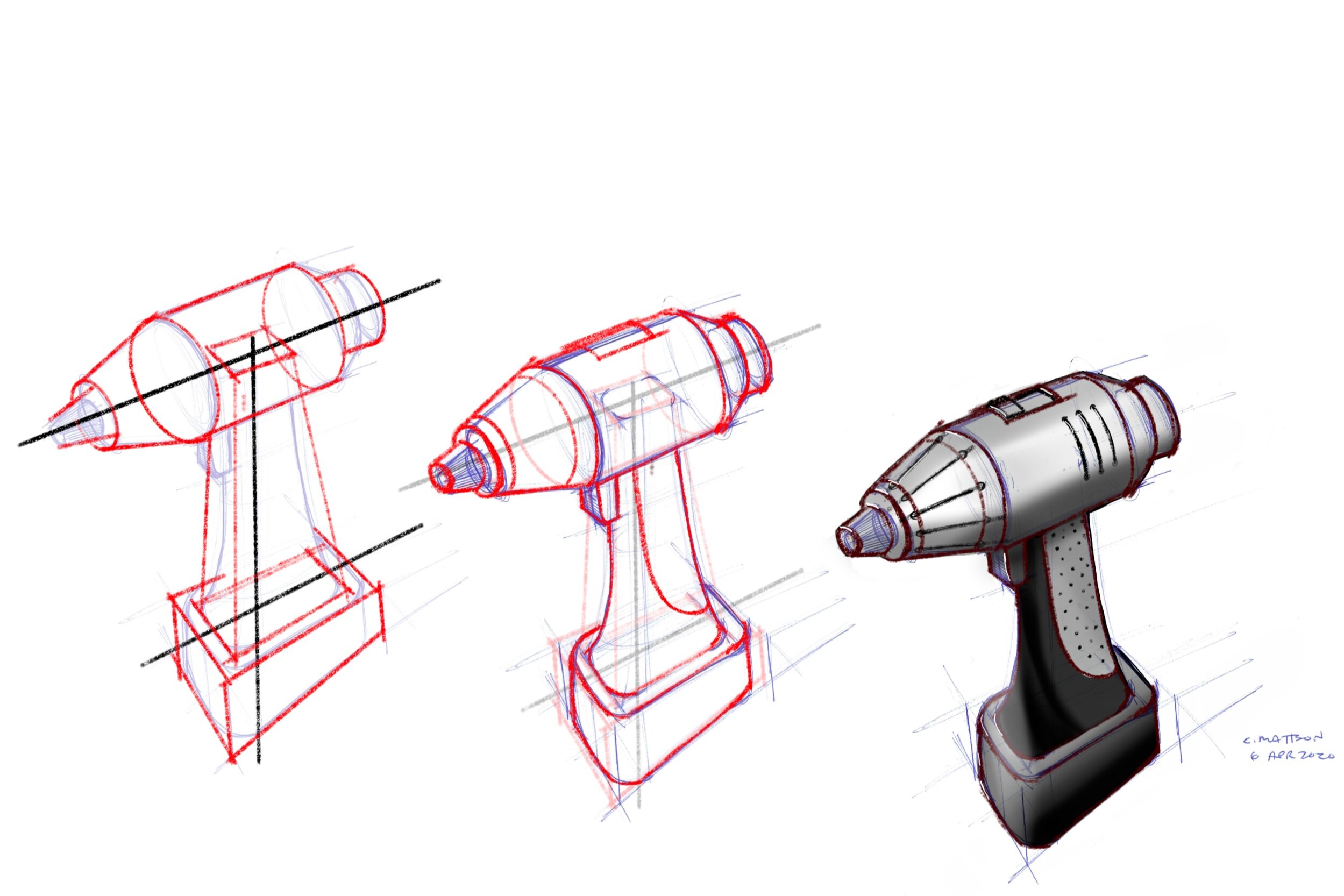Book Review of "Product Development - Principles and Tools for Creating Desirable and Transferable Designs"
Editor's Note: The newly published book entitled ``Product Development – Principles and Tools for Creating Desirable and Transferable Designs" is available for free to anyone with a SpringerLink subscription (many universities including students and faculty have a subscription), or it may be purchased for approximately 70 USD. Portions of the book are also available for free download preview. Additional books reviewed and explored on the BYU Design Review include Ed Catmull's "Creavity" and the series on Tom Kelley's "The Ten Faces of Innovation." If you are interested in submitting a book review or providing a book for review, please contact the editors of BYU Design Review.
—————
In this article, we review the newly published book entitled “Product Development – Principles and Tools for Creating Desirable and Transferable Designs,” by C. A. Mattson and C. D. Sorensen. We have read and taught from prototype versions of this book over the past eight years at Brigham Young University. During that time, we have watched Professors Mattson and Sorensen evolve and test this book in the university’s Capstone course, where we have served as team coaches for 18 different teams. As coaches, we’ve read, reviewed, and suggested improvements for each of the five test editions. During that time, we saw the book improve into the book that was published this year by Springer. Jeff is a retired aerospace engineer of more than 40 years and team coach, and considers the principles in this book apply to all successful product development projects. Jeff has seen these principles used in the successful development of hundreds of products from the simple, to the most complex, both in and outside of the university setting. John is a colleague with both Mattson and Sorenson on the BYU Mechanical Engineering Faculty and has personally witnessed some of the behind-the-scenes activity to make and design this book into a successful product. It is our opinion, that both authors practiced what they preached by evolving the book through the stages of design as they prescribe in the book. We saw them take written notes during our face to face feedback conversations, ask us clarifying questions, and iterate countless times during many years.
Rather than focusing almost exclusively on activities in the design process, as most product development books do, Mattson and Sorensen emphasize the outcomes of product development, which are divided into six stages: Opportunity Development, Concept Development, Subsystem Engineering, System Refinement, Producibility Refinement, and Post-Release Refinement. These stages are considered evolutionary stages that the design passes through as the development team carries out activities that cause the evolution. For each of those six stages of product development, the book defines specific outcomes and sub-outcomes, which the reader will find helpful in breaking up the complexity of the process into smaller pieces.
Although there is a heavy emphasis on outcomes, the book also discusses activities that can lead to success, while allowing significant freedom for individuals or teams to choose the activities that are best suited to their particular design problem. In this way, the principles taught in the book are generic enough to apply to all manufactured products. Ultimately, a product development plan is created taking into account the dependence, independence, and interdependence of the activities chosen to produce the desired outcomes. The book is largely about helping engineers, development teams, and/or project engineering managers create a customized product development plan that meets the specific needs and conditions of the product they’re designing.
The images and visualizations are clear and very useful with the right level of complexity and abstraction without superfluously breaking up the text or distracting the reader. Likewise, they build upon previous figures so that readers are not left confused or cognitively overburdened in understanding what these images represent.
An image from the book presenting the two major objectives for product development.
To aid in the development of the plan and the selection of product development activities, the book devotes the last 1/3 of the text to a unique development reference. This reference is in a glossary style help format that provides two pages on 70 or so common development activities and topics including brainstorming, prototyping, design reviews, FMEA, benchmarking, mind maps, plan-do-check-act, and many more. A basic introduction to these tools is provided, but some of them are left without a decent application example. The theory is always nice, but for students and practitioners seeking an application of the theory with a real-world example, additional examples could make this section more useful. Yes, some of the tools have additional references for the interested reader to explore more about that particular tool, but perhaps some of those could be added directly to these valuable pages.
Ultimately, the outcomes of product development are valuable only to the extent that they can be shared with the next entity in the product development process. Mattson and Sorensen focus heavily on the transferability of the design, such that the design information can be transferred to a manufacturing entity to produce the product as desired – consistent with what the design team envisioned.
Having worked in industry for over 40 years, Jeff has seen and participated in numerous successful engineering projects. What set these projects apart from less-than-successful projects was that they were all run by engineering managers who understood the product development process and implemented it within their engineering and manufacturing organizations, as well as with their suppliers. Jeff took great interest in observing how these engineering managers planned and implemented the development process. Thus, when he began coaching student teams for BYU’s Capstone Program in 2012, and read the Capstone textbook for the first time, he was excited to see how closely it resembled the processes used by those successful engineering managers. Over the past years, as a Capstone Coaches, we have watched the successful completion of hundreds of engineering projects completed by over a thousand engineering and manufacturing students, as these teams followed the product development process presented in the textbook by Mattson and Sorensen.
Although we view the book as an overall success, we recognize some limitations that could be improved. Namely, the village drill is a pervasive example used throughout the book to explain the various stages of development. For the most part, it works. Demonstrating one product evolving from the first to last stage is effective. However, if each chapter or stage could have a second or third example from a different engineering domain, the principles explain could be strengthened. Admittedly, design engineers would gain value from alternative examples beyond the design for humanitarian products. Similarly, although the book's bibliography hits the major design textbooks and design thinkers out there, we count only 24 references. For a starting point to dive into the ever-expanding world of design, it's sufficient but not comprehensive.
Despite these shortcomings, likely due to constraints on book-length and other restrictions, we recommend this book to those who want to learn what needs to be accomplished during each stage of product development, and how to choose and arrange the pertinent design and engineering activities that will lead to a desirable and transferable design. In the words of the authors, this book is “inviting to read, and friendly to review” and “will provide insight and inspiration not only during a classroom design experience, but throughout a long and successful career in engineering design.”
To cite this article:
Niven, Jeff and John Salmon. “Book Review of Product Development - Principles and Tools for Creating Desirable and Transferable Designs.” The BYU Design Review, 9 Apr. 2020, https://www.designreview.byu.edu/collections/book-review-of-product-development-principles-and-tools-for-creating-desirable-and-transferable-designs.






